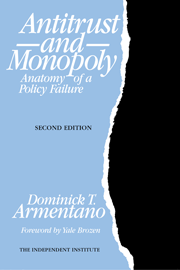The National Bureau of Economic Research has officially confirmed what everyone already knew: The U.S. economy has been in recession for many months. The question now is whether anything constructive can be done about it.
Historically there have been two very different public policy responses to a serious economic slowdown. The first—laissez-faire—is simply to allow market prices to adjust to the new economic reality. Since most economic slumps are caused by a decline in demand associated with the bursting of a credit/money bubble, prices tend to adjust downward fairly rapidly. We have seen some of this in the current crisis with real estate, stock and commodity prices (especially crude oil) falling dramatically. This falling price process tends to “clear out” the malinvestments of the credit boom and eventually sets the stage for a sustainable economic recovery.
This price adjustment process, though efficient, is painful. And the larger the initial credit bubble the larger and more painful the collapse. Many thousands of homes go into foreclosure, banks and hedge funds fail, capital goods industries are especially hard hit, and the recession normally lasts between 11 and 14 months. Lower interest rates and modest unemployment benefits tend to ease the economic hardships somewhat. We have had 10 recessions since 1948 and managed to survive them all.
An alternative policy approach, which is being tried this time, is to treat the recession with almost unprecedented doses of government intervention. In this scenario, the Treasury and the Federal Reserve engage in policies aimed at “reflating” the bursting credit bubble. The Fed lowers interest rates dramatically and inflates the money supply by purchasing government and even commercial debt. And the Treasury gets the legal authority to spend upwards of $700 billion to bail out Fannie and Freddie, commercial banks, investment banks, insurance companies, and any other private firms too big to fail.
So far, at least, the results of this approach are not promising.
The final public policy shoe to fall early next year will probably be massive public works programs (infrastructure spending) to create “jobs.” The President-elect Obama economic team and economist Paul Krugman have already gone on record as favoring such a proposal. They also seem to support another, bigger, round of so-called “stimulus” spending by consumers funded by tax rebates.
But will any of this shorten the recession? A decent argument can be made that all of these public policy responses will only make things worse and prolong the slump.
The longest recession in modern times is the one that began in 1929. It lasted a full 43 months and was quickly followed by the 1937 recession that lasted another 13 months. Almost one half of the months between 1929 and 1939 were recessionary. And between 1929 and 1939, the average yearly unemployment rate in the U.S. was a staggering 16.9%.
Though Presidents Hoover and FDR unbalanced the federal budget, created the Reconstruction Finance Corporation (to bail out banks and businesses), enacted the National Industrial Recovery Act, engaged in massive public works projects (WPA), and inflated the money supply sharply after 1934, nothing really worked. After 10 years of political and economic unrest and uncertainty, the unemployment rate was still 17.2% on the eve of our entry into WW2.
Laissez-faire economic ideas (deregulation, tax cuts) are currently out of favor but the fact remains that the Krugman and Keynesian policies of bailouts, deficit financing, and public works have never really worked. They didn’t work in the U.S. in the 1930’s; they didn’t work in the 1990’s in Japan.
They don’t work because they prop up unsustainable investments in the private sector rather than clear the way for new entrepreneurship. And they don’t work because government central planning is hopelessly naïve (they even have trouble mailing out rebate checks). Sometimes in economics (as in medicine) doing “nothing” (allowing the system to heal itself) works better than drugs with nasty side effects or bureaucratic attempts at reconstructive surgery.








